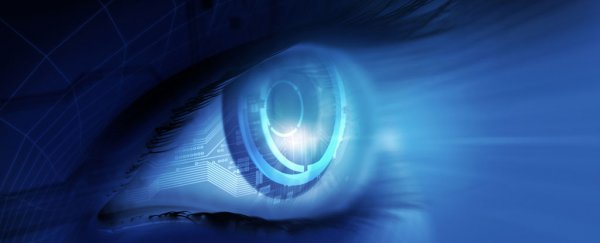Scientists in Australia are set to begin trials of a new bionic eye system that's expected to give patients vision several times better than current vision restoration technologies.
The Phoenix99 bionic eye, developed by engineers at the University of New South Wales (UNSW), is a fully implantable system that represents a number of world-firsts in neural stimulation technology. The device, which has been successfully demonstrated in pre-clinical work by a team of elite surgical experts around Sydney, recently received a funding boost to help the scientists move toward the next stage of research, human implantation.
"We were really excited by the first trial because it proved the technology and implementation technique works," said one of the inventors of the system, Gregg Suaning. "Patients 'learn' to use the technology, in the same way a person implanted with a cochlear ear implant 'learns' to hear electrical impulses."
The team at UNSW has been researching bionic eye technology since 1997, with the goal of restoring sight to people with retinitis pigmentosa – the leading cause of blindness in younger people – and age-related macular degeneration.
Retinitis pigmentosa is a degenerative condition that affects up to 2 million people globally. The condition, which often presents in patients in their 30s, can lead to complete blindness in 10 years. While medications can slow its progress, they are expensive and only available in developed countries, and scientists still don't know how to reverse the degeneration.
But one way of restoring sight to people affected by retinitis pigmentosa could be via bionic vision, and in 2012 the UNSW engineers were part of a team that trialled an earlier, partially implanted prototype device with three patients with retinitis pigmentosa.
The prototype consisted of a 24-electrode array with external electronics that allowed the patients users to see spots of light, called phosphenes. With the help of special cameras, the users could also get a sense of distance, with the phosphenes appearing brighter when still objects were closer.
"It's been amazing," said Dianne Ashworth, one of the implant recipients. "The more I've used it, the more natural it feels."
In contrast to this earlier prototype, the new Phoenix99 devices that the researchers intend to begin trialling with patients soon are fully implantable, and are expected to enable significantly better vision than the previous technology.
Suaning and fellow co-inventor Nigel Lovell plan to implant the Phoenix99 in up to a dozen patients over the next two years. The surgery required to implant the bionic eye takes about 2 to 3 hours, after which point the only sign of the implant is a small disc behind the ear that transmits power and data to the device, which in turn delivers electrical impulses to the back of the eye.
The user also wears a pair of glasses equipped with a small camera. The images captured by the camera help to define the stimulation of nerve cells in the patient's retina, sending signals to the visual cortex of the brain.
According to the researchers, their bionic eye system has the potential to restore vision to millions worldwide: in addition to those affected by retinitis pigmentosa globally, many millions more have age-related macular degeneration.
The team has just received AU$1.1 million in new funding from the National Health and Medical Research Council (NHMRC), but the scientists say they'll need an additional $10 million over the next five years to help take their research to the next level and get their bionic eye into mainstream clinical practice.
You can donate to the project here.
Let's hope they're successful in securing this money – this research could transform the lives of nearly 200 million people around the globe.
UNSW Engineering is a sponsor of ScienceAlert. Find out more about their research.
